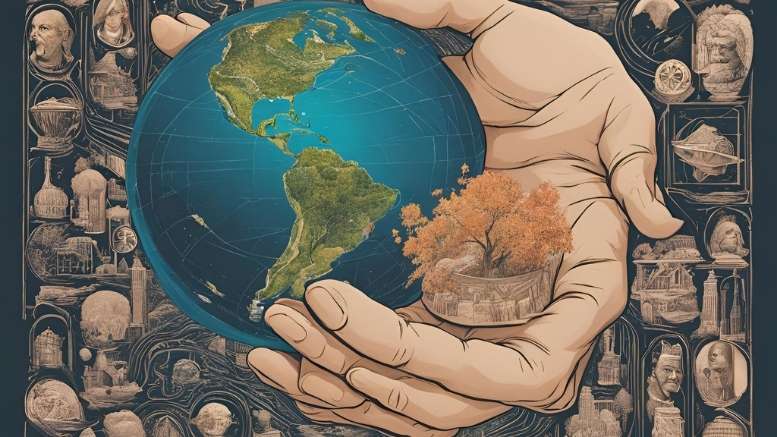A Mobilized News Feature
“Fast fashion isn’t free. The environment pays the price.”
This simple truth has sparked a powerful global awakening—and given rise to a quiet revolution: slow fashion.
In an era defined by mass consumption, quick turnarounds, and microtrends that vanish faster than they arrive, the slow fashion movement offers something radical: intentionality. Not just in what we wear—but in how we live, how we value resources, and how we care for the Earth.
The Cost of Fast Fashion
The rise of fast fashion—characterized by cheaply made, disposable clothing—has turned our closets into landfills in waiting. Today, the fashion industry is responsible for:
- 10% of global carbon emissions
- 20% of global wastewater production
- The equivalent of a garbage truck full of textiles dumped every second
From excessive water usage in cotton farming to toxic dyes that poison rivers and polyester microfibers that flood our oceans, fast fashion’s environmental footprint is immense and deeply unsustainable.
And the human toll? Garment workers often endure unsafe working conditions and earn far below living wages. Entire communities are sacrificed for the low price tags seen on global shelves.
What Is Slow Fashion?
Slow fashion is more than just a trend—it’s a philosophy. It prioritizes quality over quantity, ethics over exploitation, and regeneration over extraction.
Key principles include:
- Locally made or regionally sourced garments
- Natural or recycled fibers instead of synthetics
- Durable design that outlasts seasonal trends
- Transparent supply chains that honor people and the planet
- Repair, reuse, and upcycling as core practices
The movement calls for a return to conscious consumption, where clothing is viewed not as disposable, but as a long-term companion.
Environmental Impact of Going Slow
Slow fashion offers real and measurable benefits for the planet:
Reduced Waste
By encouraging fewer purchases and longer-lasting garments, slow fashion drastically cuts textile waste. Some brands even take back used items to refurbish or recycle them.
Water Conservation
Organic fabrics like hemp, linen, and rain-fed cotton require far less water than conventional cotton. Natural dyes and closed-loop dyeing systems prevent waterway pollution.
Lower Carbon Emissions
Small-scale, local production eliminates long global shipping routes. Many slow fashion brands are also investing in renewable energy and carbon offsets.
Circular Economy Integration
Repair workshops, clothing swaps, and buy-back programs promote reuse. Deadstock materials and post-consumer waste are repurposed into new garments.
Designing a Better World: Brands Leading the Way
From small local ateliers to global pioneers, these are just a few brands making waves in slow fashion:
- Reformation (USA): Uses eco-friendly materials and tracks its environmental footprint for each product.
- Tonlé (Cambodia): A zero-waste fashion company that transforms leftover textiles into beautiful garments.
- Eileen Fisher (USA): Runs a take-back program and resale shop, offering customers store credit for returning worn clothing.
- Antidote (Miami): A boutique leading South Florida’s slow fashion scene with vegan, ethical, and upcycled brands.
But beyond brands, the true revolution is in the consumer mindset. More people are asking: Who made my clothes? And what impact does my wardrobe have on the Earth?
A Cultural Shift in the Making
Slow fashion is also a cultural act—an antidote to hyper-consumerism. It challenges the idea that status is found in accumulation. Instead, it finds beauty in craftsmanship, story, and connection.
In Indigenous communities, garments are often sacred—woven with memory, identity, and ceremony. The slow fashion movement honors this wisdom and seeks to decolonize the fashion system, bringing dignity back to makers and materials alike.
How You Can Join the Movement
You don’t need to overhaul your closet overnight. Start small:
- Buy less, choose well
- Support local designers and ethical brands
- Learn to mend your clothes
- Host a clothing swap
- Buy vintage or secondhand
- Ask brands about their labor practices and material sourcing
Slow fashion is about building a wardrobe that tells a story—a story of care, justice, and regeneration.
From Threads to Transformation
In a time of ecological breakdown and social disconnection, the clothes we wear can be a statement of resistance, healing, and hope.
By embracing slow fashion, we don’t just reduce our carbon footprint—we participate in weaving a future where style aligns with sustainability, and beauty is inseparable from ethics.
“When you choose slow fashion, you choose to slow down destruction—and stitch a more resilient world.”
For more tools, resources, and stories of fashion for the future, visit:
